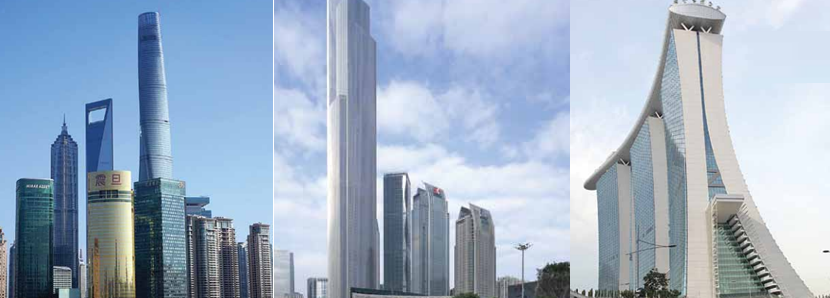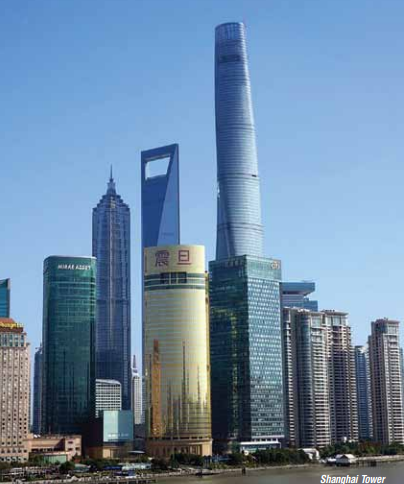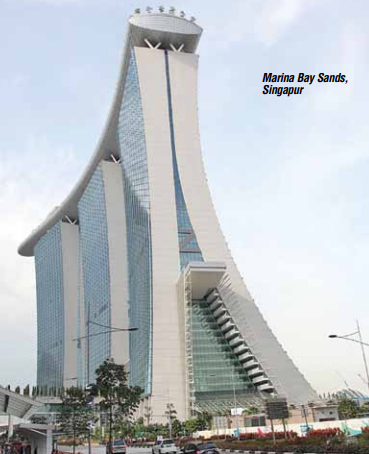
Vincent Tse, Director General, Building Mechanics for China, talks to us about the technical challenges associated with the design of vertical transport systems (TV) for tall and very tall towers and its solutions for the most efficient buildings possible.
The design of vertical transportation systems in tall and very tall buildings presents significant challenges. As TV system designers, we must respect basic international standards while taking into account the many parameters, priorities and sometimes contradictory requirements of architects, developers and operators. This requires flawless coordination of the design to integrate the needs of all stakeholders into a seamless solution. Architects show boundless creativity when it comes to designing iconic tall buildings. Developers and architects want their projects to stand out and, to do so, they appeal to attractive and surprising shapes that distinguish them from their neighbors, whether they are classic squares or rectangles, circles, ellipses. , triangles, rhomboids, fans or any other shape imagined by architects.
The shape of a building affects the design of vertical transportation systems. For example, for an office building with a circular central core, elevators may need to be arranged radially to optimize capacity and usable area, and to conform to the shape of the building.
90% of all very tall towers (500 m and more) under construction or at the design stage will be for mixed use. In addition to the different forms these buildings can take, the mixed use of very tall towers adds another level of complexity to TV solutions. If a building contains offices, a hotel, serviced apartments and an observation deck, different groups of elevators will be required to serve these different functions. They will require their own elevator homes and technical facilities for individual management and better safety control, which will affect the arrangement and grouping of elevators in the central structural core.
We work closely with architects and structural engineers to ensure that our elevator systems optimize the floor space. Since the construction costs of very tall towers are 30% to 50% higher than those of low rise buildings, efficient use of floor space is a priority aspect of their design. Developers must maximize the floor space available for rental in order to obtain an optimal return from their overall investment. Personal and fire safety add another level of complexity to TV systems in high-rise mixed-use buildings.
We are working closely with all authorities to put in place safe evacuation procedures in the event of an emergency, such as a fire or electrical failure. In most cities around the world, fire departments do not allow fire elevators to be designed or used to evacuate occupants. Many building codes, however, allow the use of express elevators to evacuate building occupants in the event of an emergency.
One of the biggest challenges we face is the difference between the outside temperature and the inside temperature. There is a big difference between designing a system for a tall building in the Middle East and a tall building in Toronto, where the night temperature can be -35oC outside and 10oC outside inside. This temperature difference creates a strong suction pressure in the elevator shafts which can prevent the doors from closing properly. This can result in a very loud hissing sound which, in extreme cases, can cause hearing damage. Even in less extreme cases, guests of a 6-star hotel at the top of a building will not tolerate noisy elevators. TV system designers need to have a lot of experience to understand how to design for different environments.
Tall and very tall buildings are only possible due to technological advances in elevators. Imagine the weight of elevator cables in a 500 m high building, in which each elevator is supported by six to eight steel cables, each going up and down over 500 m, for a total length of 1 km and a weight several thousand kilograms. The current technology trend is therefore to use fiber cables in very tall buildings over 700-800 m.
Another innovation is high-speed motors, along with high-reliability braking devices that prevent the elevator cabs from falling. Advanced bracing and anti-vibration systems are also needed to protect elevator systems from the natural movements of tall buildings.
————-
Source: wsp.com





